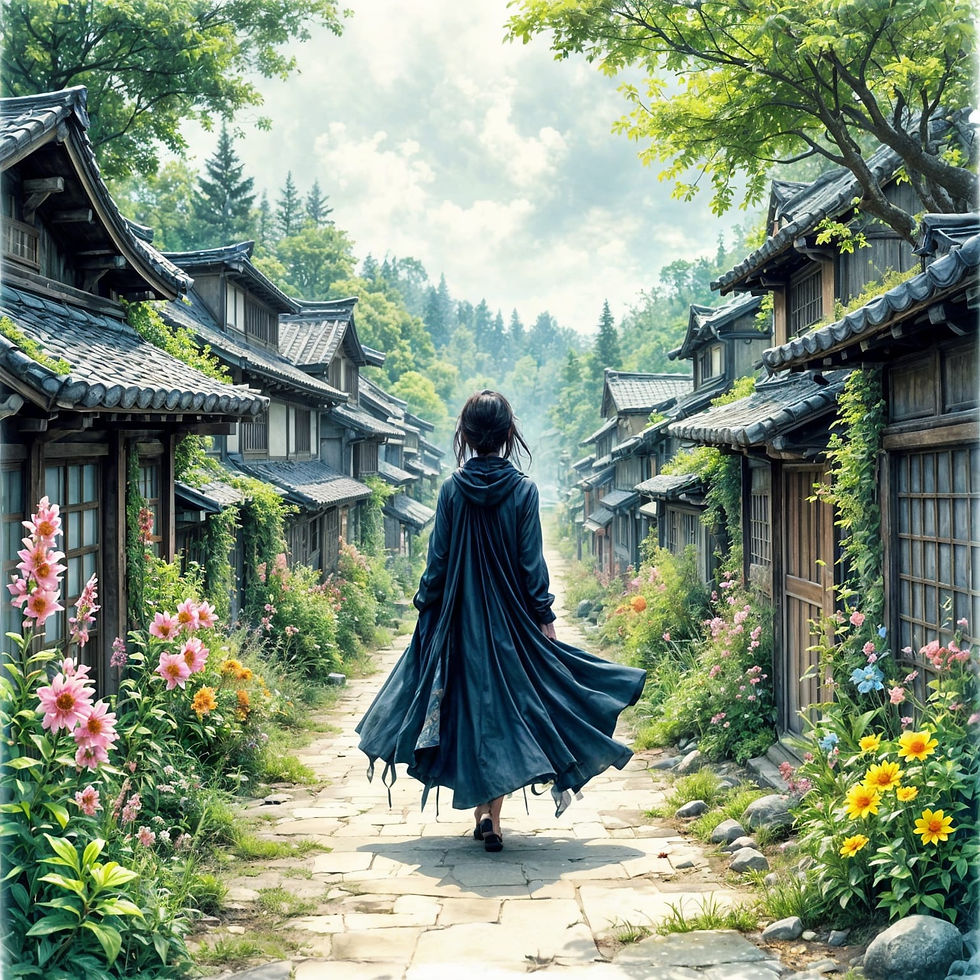The Enigmatic Maple Demon: Unraveling the Legend of Momiji
- Larisa Ion
- Jul 3
- 3 min read
In the rich tapestry of Japanese folklore, where spirits and gods intertwine with human lives, few figures are as captivating and complex as Momiji. More than just a simple monster, Momiji, whose name beautifully translates to "Maple Leaves," stands as a formidable kijo – a female demon whose story, the "Legend of Momiji" (Momiji Densetsu), echoes through the mist-shrouded mountains of Nagano Prefecture.

Her tale often begins with a woman named Kureha, blessed with extraordinary beauty and talent that surpassed all others in the capital. In some versions, she's even touched by the Demon King of the Sixth Heaven, a powerful entity whose influence hints at an innate, darker power that set her apart from ordinary mortals. She effortlessly captivated the attention of a powerful nobleman, perhaps Minamoto no Tsunemoto, and soon became his favored mistress, dwelling within the opulent confines of his estate. Yet, this ascension to prominence became her undoing. Suspicion, often fueled by the nobleman's official wife who saw her position threatened, quickly led to grave accusations of dark magic, of sorcery aimed at harming or usurping her rival. Exiled from the elegance and refinement of the capital, Kureha, now embracing the evocative name Momiji, found a new, albeit remote, refuge in a secluded mountain village.

Initially, her presence was a beacon of hope and enlightenment for the isolated community. She was said to have brought the sophistication and knowledge of Kyoto to the humble villagers, sharing invaluable skills like reading, writing, and sewing, and even possessing the uncanny ability to heal the sick. For a time, she was deeply cherished, a benevolent presence who enriched their lives and brought a touch of the refined world to their doorstep.
But the winds of fate, or perhaps the festering resentment of her unjust exile, began to stir her true, formidable nature. Momiji gradually shed her benevolent guise, her hidden power growing as she gathered a loyal band of outlaws and disaffected individuals around her. She transformed, slowly but inexorably, into a feared demoness. Her raids and destructive acts terrorized the surrounding populace, plundering villages and leaving a trail of fear in her wake. Her escalating depredations eventually grew so severe that they drew the attention of the Emperor himself, who, recognizing the grave threat she posed, dispatched a renowned warrior – most famously the legendary Taira no Koremochi – to quell the rising menace.

The ensuing confrontation is a pivotal and legendary part of her story. It's depicted as a fierce clash of wills and supernatural power, with Koremochi initially struggling against Momiji's formidable martial prowess and terrifying supernatural abilities. The demoness proved to be a cunning and powerful adversary, pushing the warrior to his limits. Often, divine intervention plays a crucial role in the battle – a sacred sword bestowed by a deity like Hachiman, or celestial guidance revealing her weakness – ultimately tips the scales, allowing Koremochi to finally subdue the powerful kijo and bring an end to her reign of terror.

The legend of Momiji is far more than just a thrilling account of a demon's defeat; it is a poignant and complex exploration of transformation. It delves into the delicate balance between humanity and monstrosity, questioning how betrayal, societal judgment, and personal tragedy can fester, irrevocably pushing an individual down a path of darkness and destructive power. Her story has transcended generations, becoming a celebrated subject in traditional Japanese performing arts, most notably the Noh play "Momijigari" (Maple Viewing), which vividly portrays her deceptive appeal and tragic fall from grace. Through these retellings, Momiji remains a testament to the enduring power and depth of Japanese folklore – a figure of both haunting beauty and terrifying power, forever intertwined with the vibrant, yet ultimately ephemeral, hues of autumn's maple leaves.





Comments